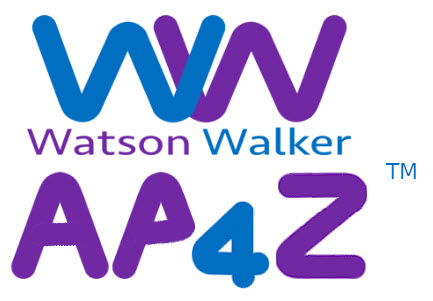Watson & Walker, the mainframe industry’s leading independent performance consultants, are delighted to announce our latest software product, the Watson & Walker Application Profiler for Z (AP4Z).
latest software product, the Watson & Walker Application Profiler for Z (AP4Z).
- Are you a performance analyst, frustrated by seeing a generic program name (with no indication of what program is actually being executed) when you use SMF type 30 records to identify your heaviest CPU-consuming batch jobs?
- Are you an application developer, working with an object-oriented application, annoyed at how difficult it is to determine why your program is consuming so much CPU time, but unable to see ‘under-the-covers’ into what the called services are doing?
- Are you the manager of the DevOps team, tasked with migrating your COBOL application programs to a supported COBOL release before IBM withdraws service for COBOL V4? Realistically, you have more programs to be recompiled and tested than you have time, so where do you start?
- Are you a system programmer, trying to get a handle on exactly which compiler levels are still needed and which can be removed from your systems? Just because no one ran the VisualAge PL/I compiler recently doesn’t mean that are you not running applications compiled with that level of compiler, and therefore need to have that compiler available in case application changes are required.
- Are you the lucky(?) person that owns the software budget, challenged with trying to control your costs after moving to IBM’s Tailored Fit Pricing Software Consumption Solution? While LPAR capping still plays a role , it is no longer the safety net to ensure your costs don’t exceed your budget. If your applications use object-oriented programming or microservices, do you know which programs are really consuming the most CPU time?
If your answer to any of the above questions is ‘yes’, then the answer is our new Watson & Walker’s Application Profiler for Z. It gathers CPU and Elapsed times, compile-time options, and program inter-relationships for your entire application portfolio (initially for Batch, with CICS support on the way). All of this information (up to hundreds of fields per main program, depending on the level of detail you request) is loaded into a database and accessible via an intuitive query interface (both of which come with AP4Z).
Even people with no programming skills can create reports such as:
- How many times is the GETZIPCD application service called every day?
- Looking across all my application programs, both main programs and dynamically called ones, which ones are the heaviest CPU consumers?
- What percent of application CPU time is used by programs that were compiled with COBOL V4?
- Does compiling a program from application X with a higher ARCH Level make a difference to elapsed or CPU times?
- Job ABC just abended for the first time in 10 years. Have any of the programs in that job, or programs dynamically called by those programs, been recompiled recently?
- My program’s long elapsed time is drawing attention – should I be focusing on reducing its CPU time or is most of the elapsed time spent doing something other than consuming CPU?
The CPU cost of collecting application profiling information is negligible, which means that AP4Z can be run all the time, for all your applications, enabling you to create a historical database containing a wealth of information about your entire active application portfolio. This database can be used by many groups in the IT department, enabling facts-based decision making, using up to date information about the programs that are actually running in your environment.
AP4Z doesn’t require source changes, JCL changes, or recompiles. It runs completely in problem state, and doesn’t require APF authorization, user exits, or system hooks. It can be used to gather information about COBOL, C/C++, PL/I, and LE-enabled Assembler programs. Its distributed component is optionally packaged as Docker containers, and can run on a Windows or Linux server. The only software that is required on the user’s workstation is a browser.
We believe that AP4Z addresses a gap in the application development/performance tooling marketplace. It combines previously unavailable information, with aspects of existing execution sampling, software asset management, and static load module scanners, providing a single source of information that is easy to use, insightful, and time-saving. It delivers a new level of value to infrastructure staff, application developers, and management. In Cheryl’s words, “My only regret is that I didn’t have this 40 years ago – my life would have been so much easier!”
If you would like to learn more, refer to our AP4Z home page, or, if you are attending the SHARE Virtual Experience, you can watch Cheryl’s SHARE On-Demand AP4Z presentation. Alternatively, email us with your questions and we will be delighted to help.

